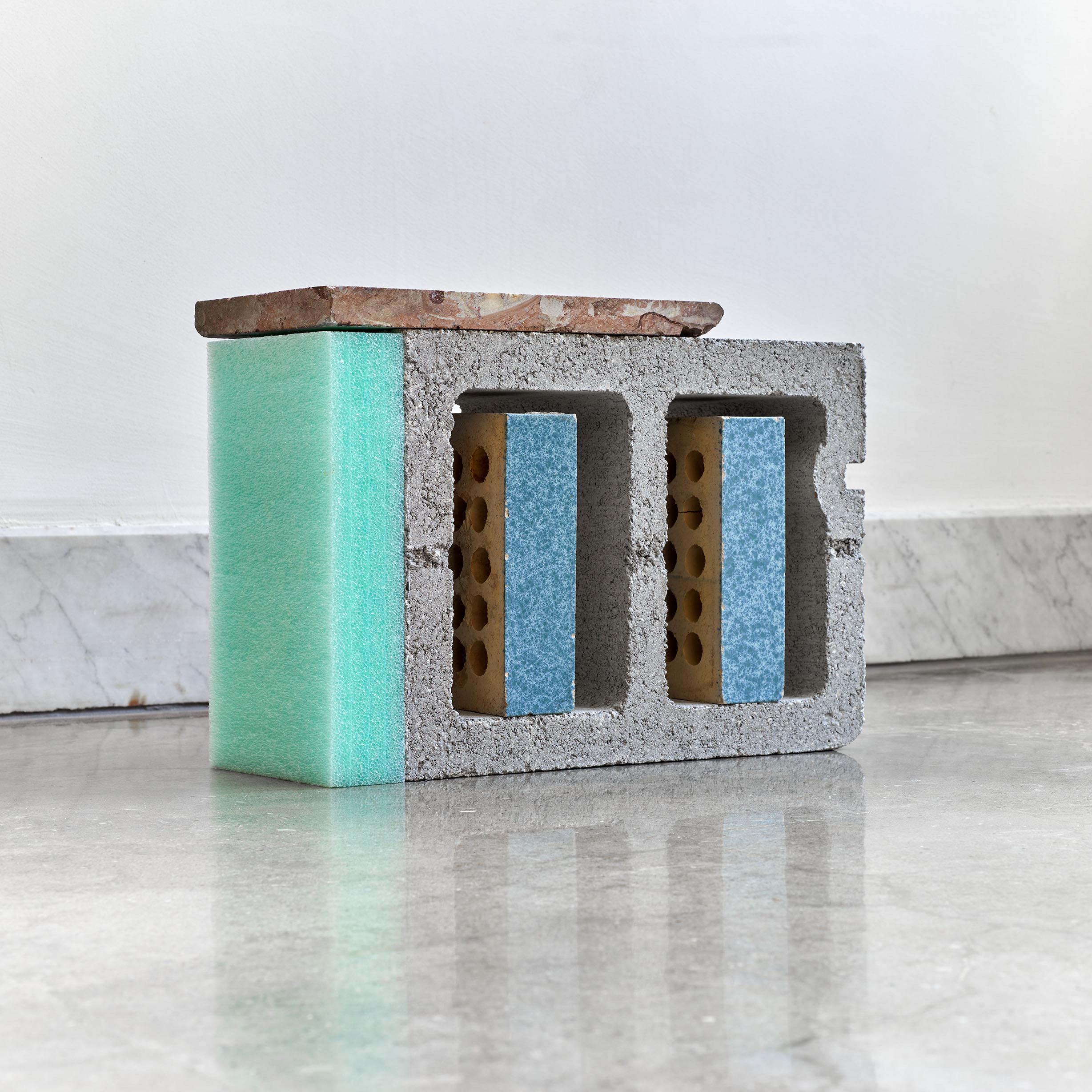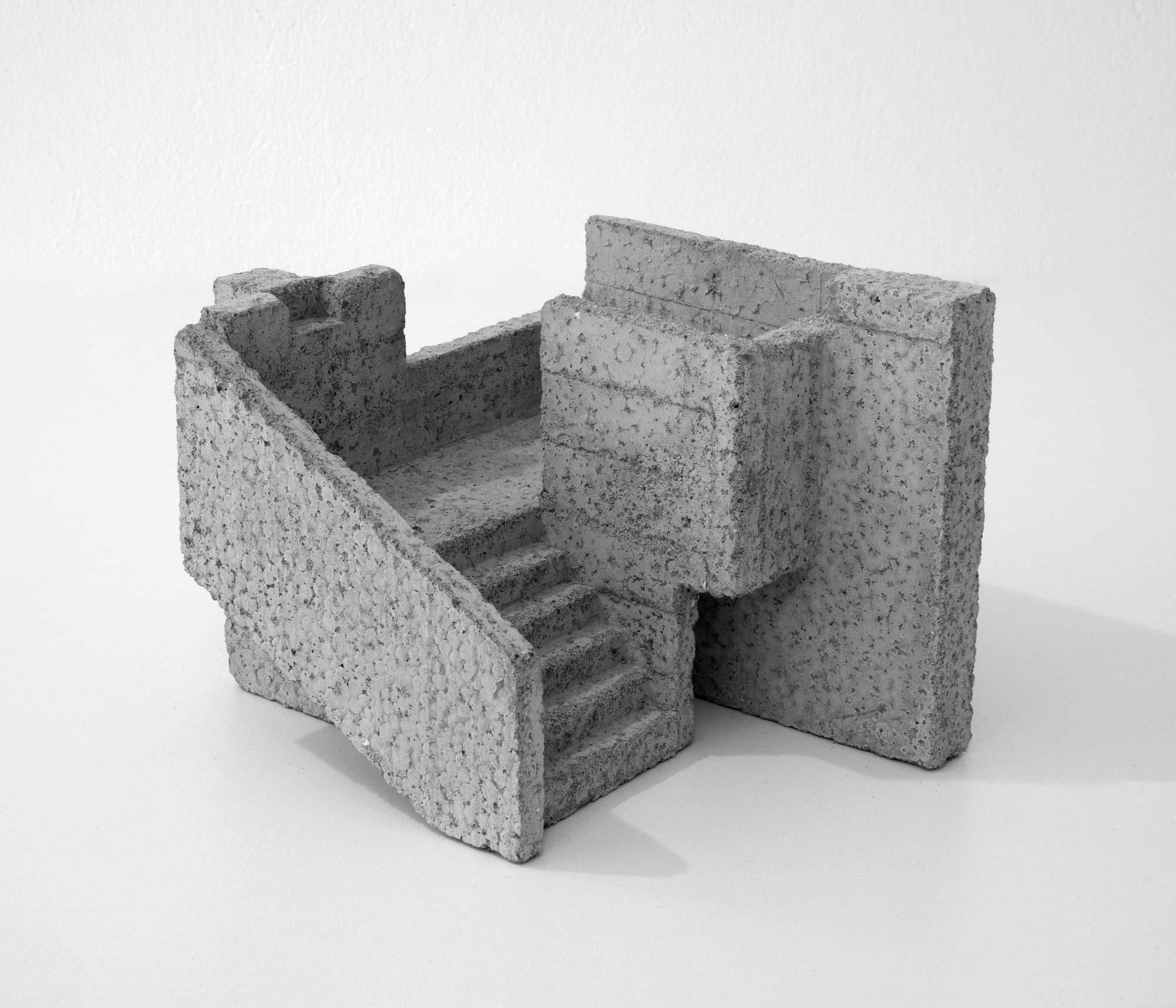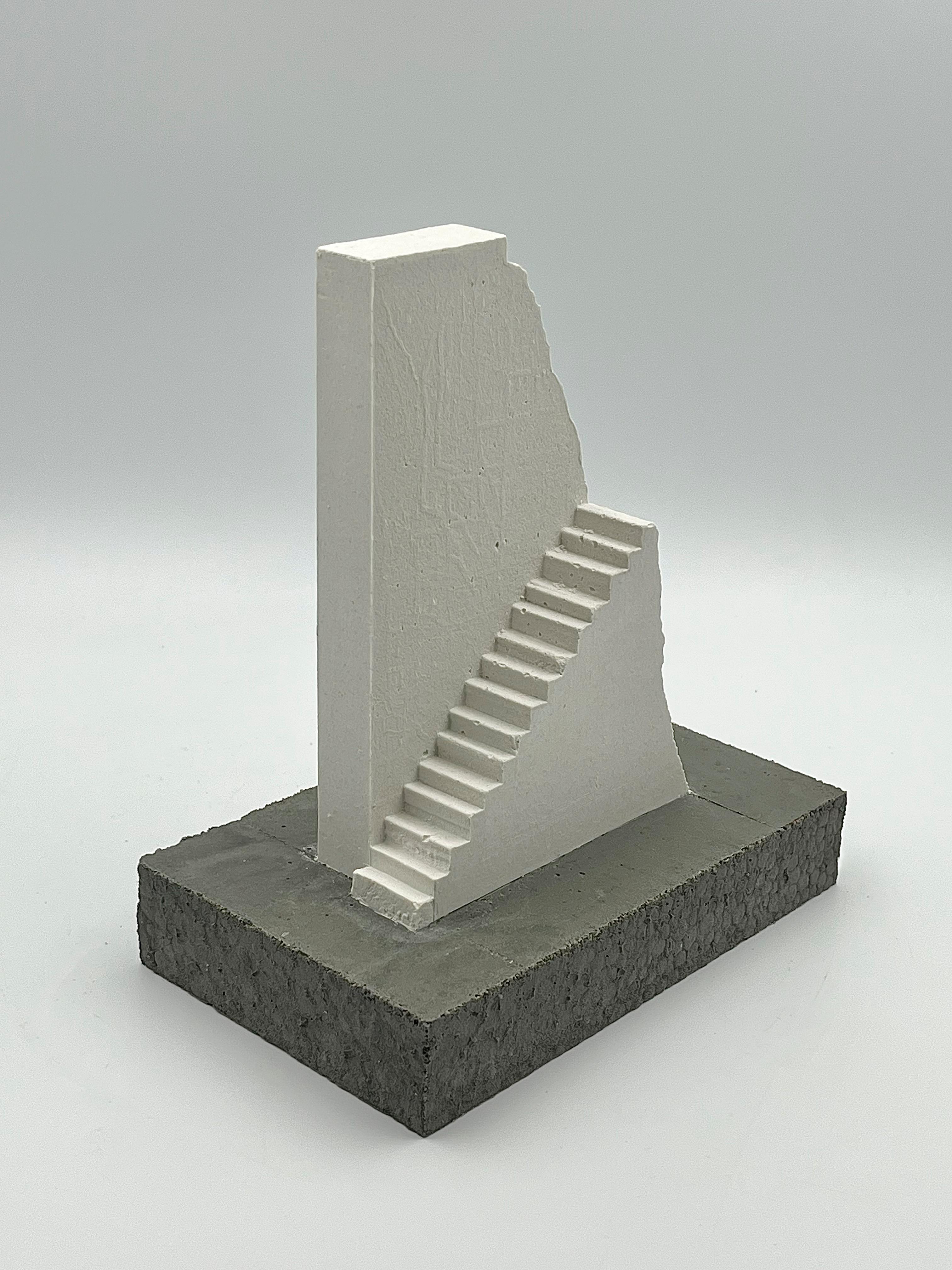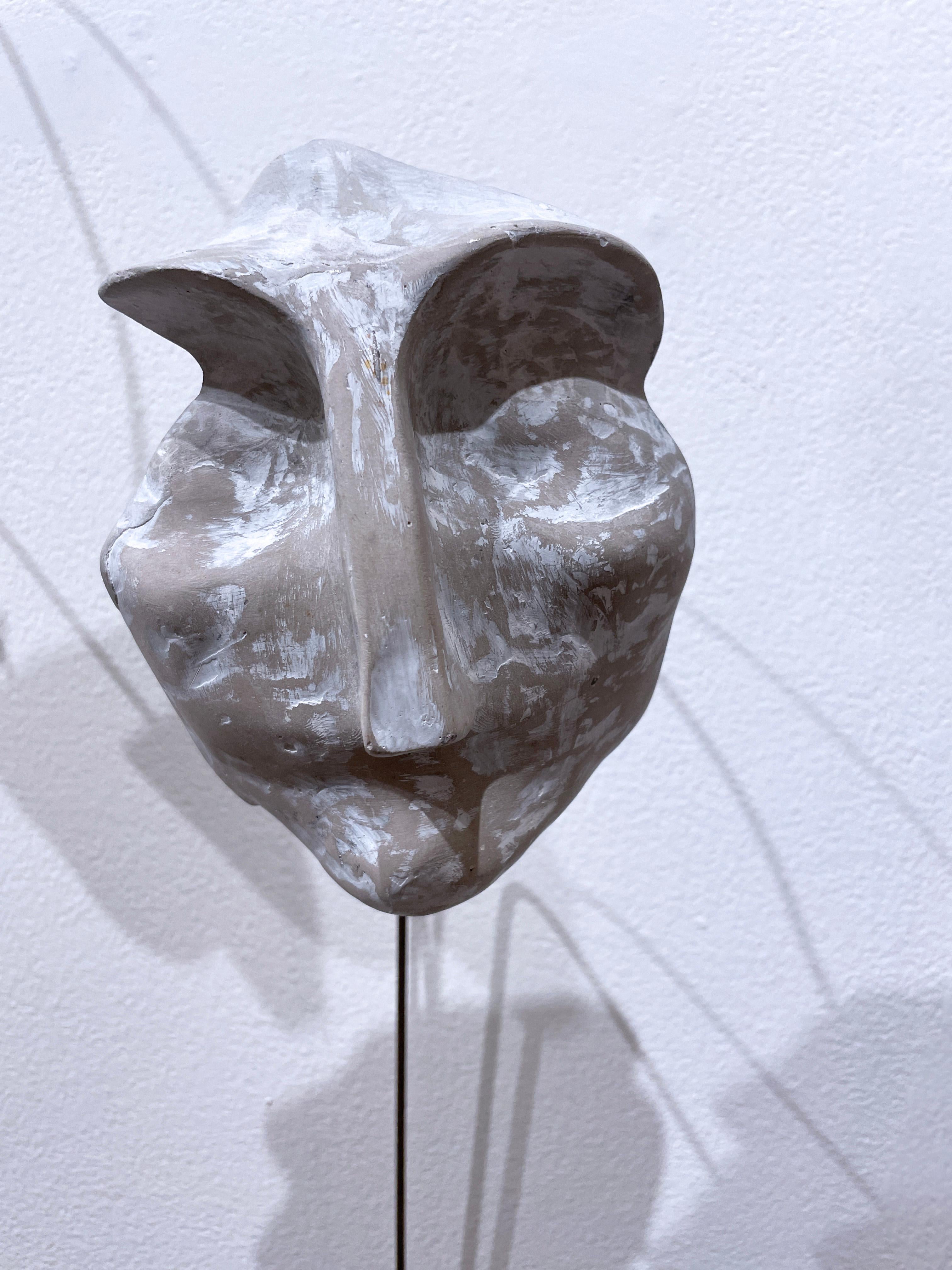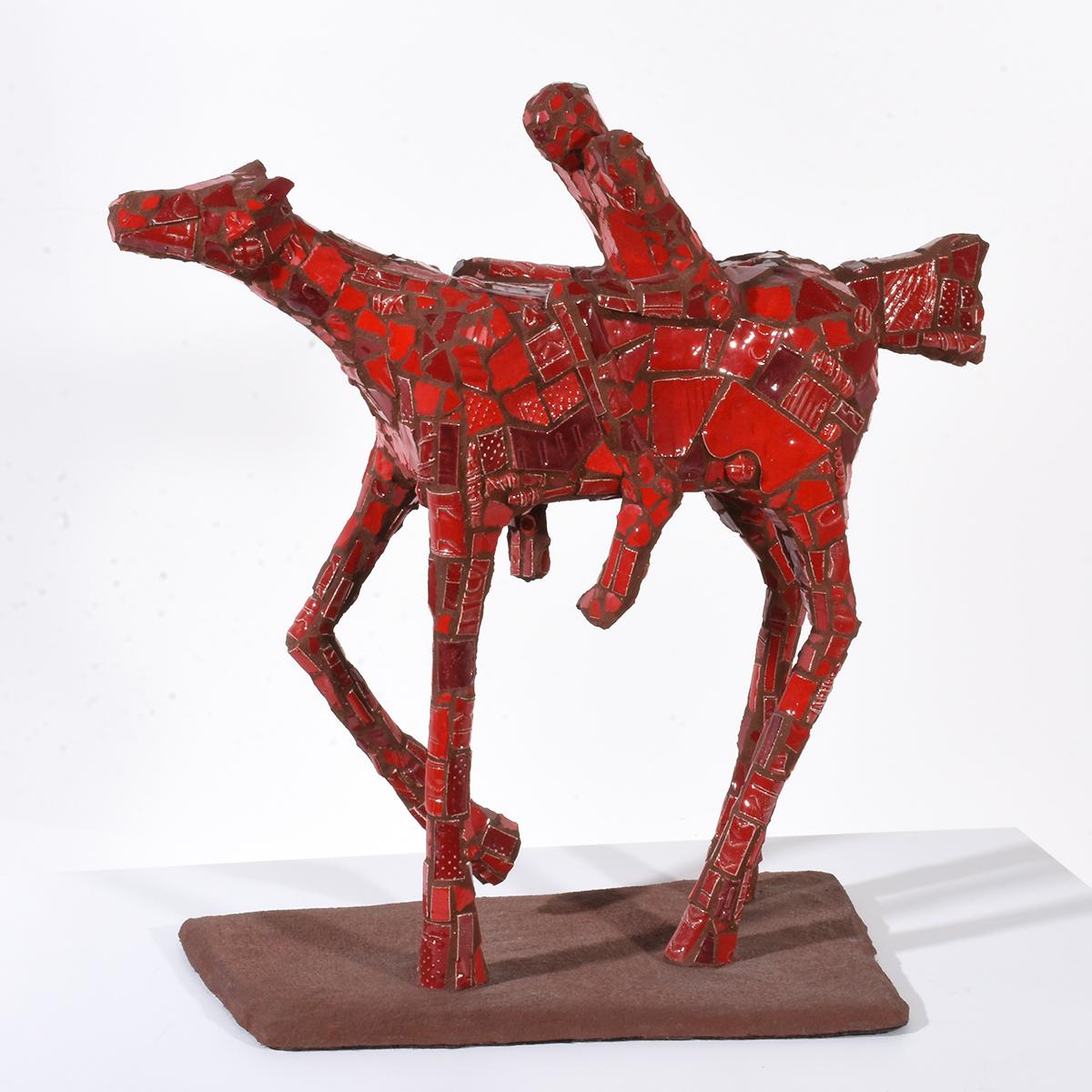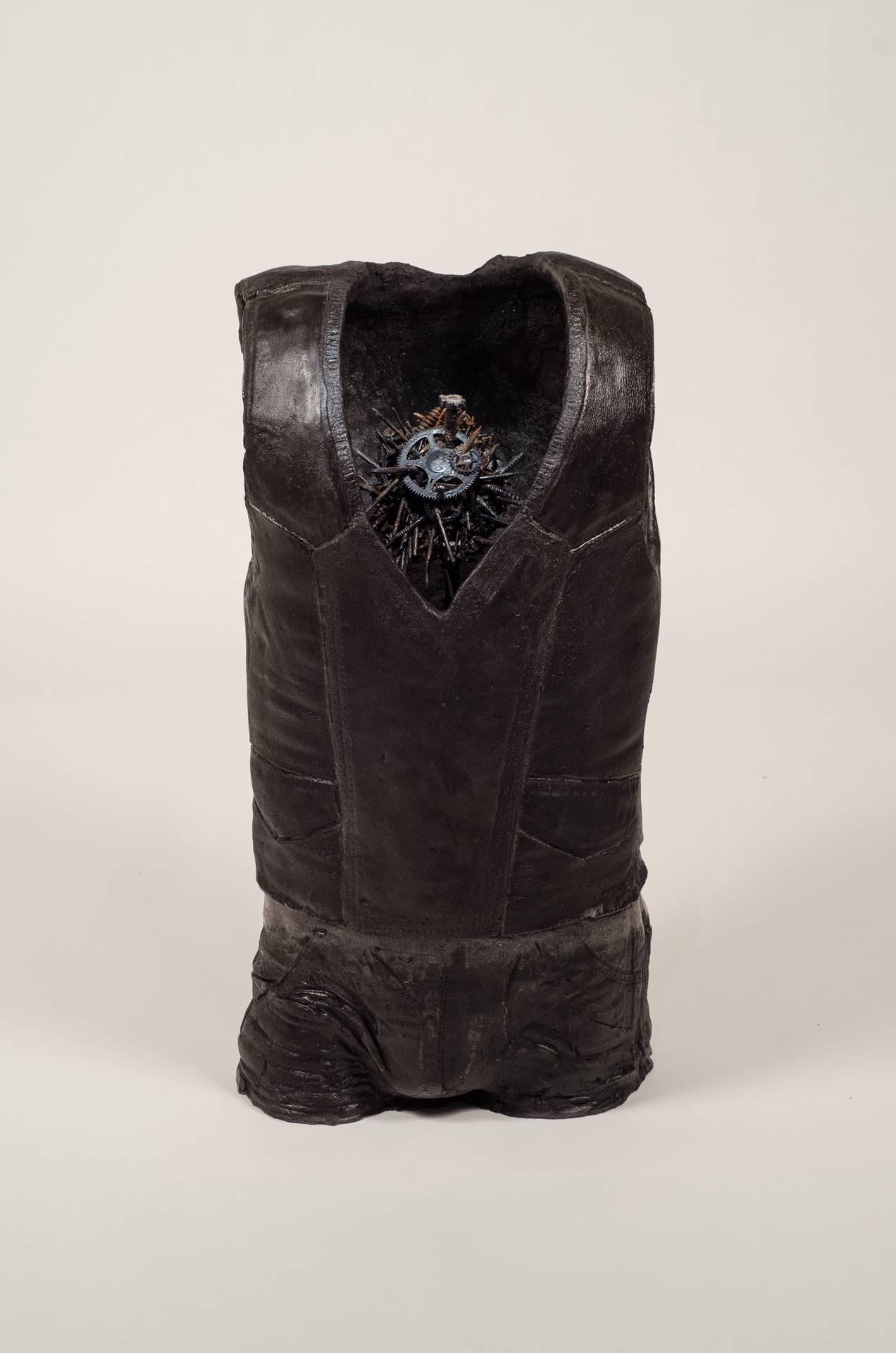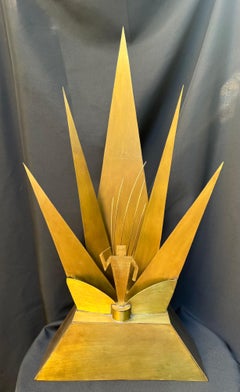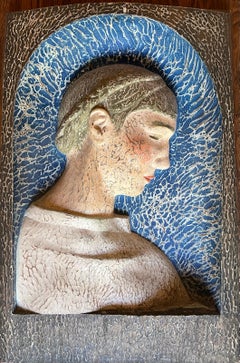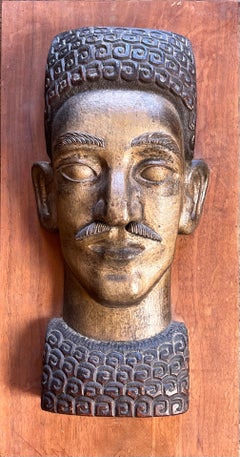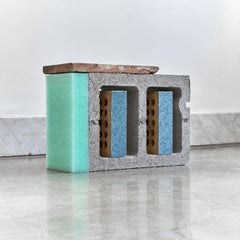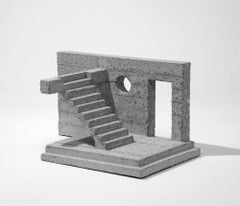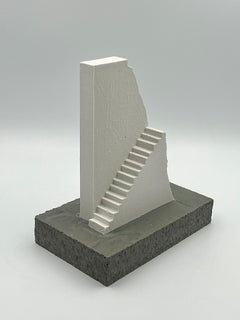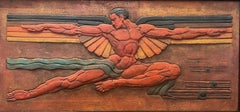
Winged Male Figure - Apollo
View Similar Items
Dena Paige Fischer - Dusty Rose Sage (2022), terracotta concrete abstract face sculpture, metal wire

Dena Paige Fischer - Speckled Sage (2022), gray concrete abstract face sculpture, metal wire, earthy
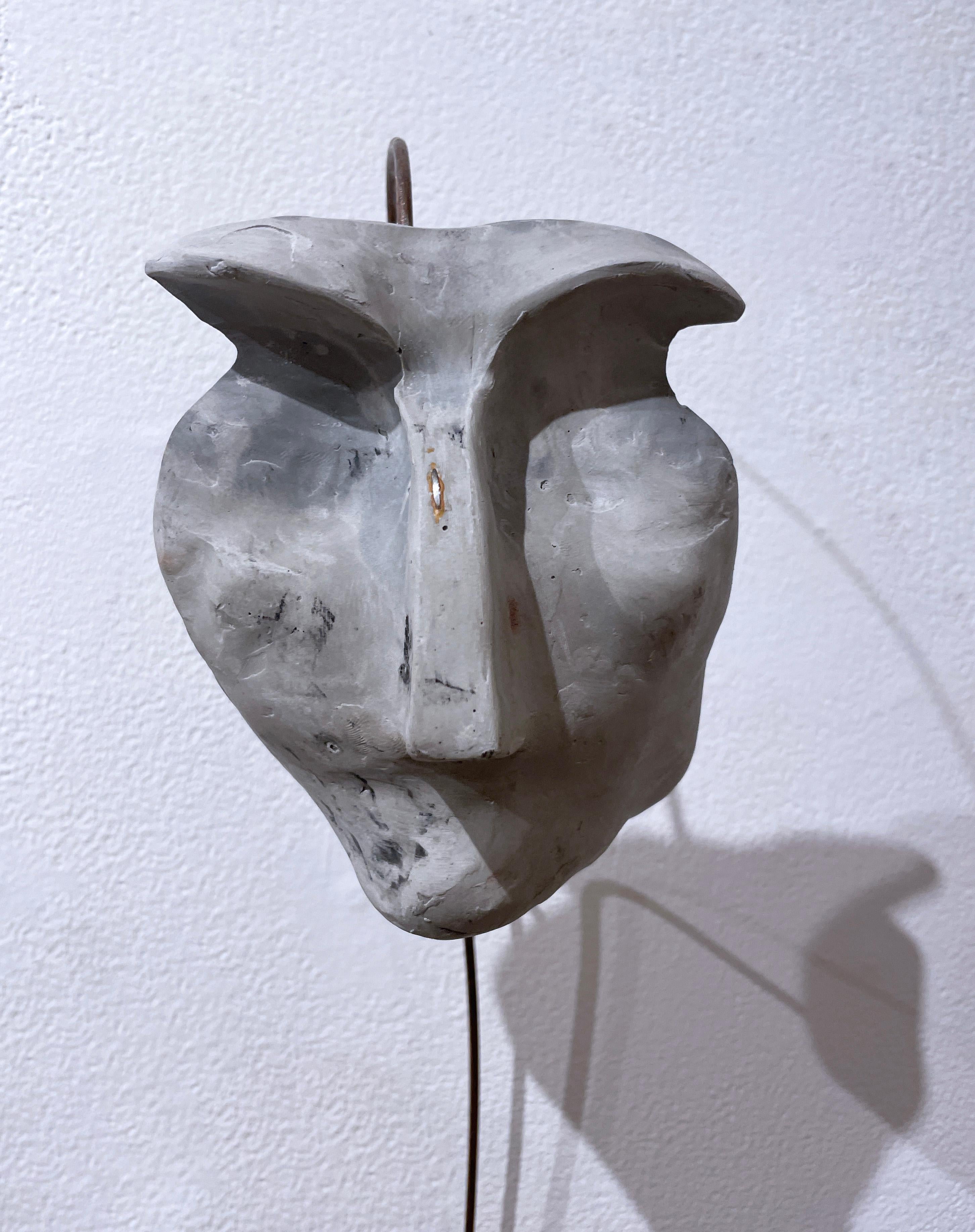
Want more images or videos?
Request additional images or videos from the seller
1 of 3
Jason (Jessie) HerronWinged Male Figure - Apolloc. 1930s
c. 1930s
$9,500List Price
About the Item
- Creator:Jason (Jessie) Herron (1900 - 1984, American)
- Creation Year:c. 1930s
- Dimensions:Height: 12 in (30.48 cm)Width: 26 in (66.04 cm)Depth: 4 in (10.16 cm)
- Medium:
- Movement & Style:
- Period:
- Condition:
- Gallery Location:Los Angeles, CA
- Reference Number:1stDibs: LU1859213055242
About the Seller
5.0
Vetted Professional Seller
Every seller passes strict standards for authenticity and reliability
1stDibs seller since 2022
15 sales on 1stDibs
Typical response time: 22 hours
Authenticity Guarantee
In the unlikely event there’s an issue with an item’s authenticity, contact us within 1 year for a full refund. DetailsMoney-Back Guarantee
If your item is not as described, is damaged in transit, or does not arrive, contact us within 7 days for a full refund. Details24-Hour Cancellation
You have a 24-hour grace period in which to reconsider your purchase, with no questions asked.Vetted Professional Sellers
Our world-class sellers must adhere to strict standards for service and quality, maintaining the integrity of our listings.Price-Match Guarantee
If you find that a seller listed the same item for a lower price elsewhere, we’ll match it.Trusted Global Delivery
Our best-in-class carrier network provides specialized shipping options worldwide, including custom delivery.More From This Seller
View AllMusic (attributed)
By Philip Kran Paval
Located in Los Angeles, CA
This sculpture is part of our exhibition America Coast to Coast: Artists of the 1930s
Music (attributed), brass and wire construction, c. 1936, 28 x 14 x 5 inches; perhaps exhibited at Hollywood Riviera Gallery, 1936 (third prize); provenance includes Estate of Jon Spencer Helfen (Los Angeles, CA
About the Sculpture
In 1935, Philip Paval bought a box of metal in a “blind auction.” Paval, a painter, sculptor, and jeweler, had hoped the box contained silver. To his dismay, it was brass. Seeing an opportunity, Paval started to make sculptures from the brass sheets. His subjects included Cinema, Hollywood, Radio, Dance, Aviation and Music. The works were well-received with the Hollywood crowd and critically acclaimed. Actor and comedian, Ben Bard, purchased four of them for his theater, and novelist and screenwriter, Vicki Baum ordered four more for her drawing room. Movie director King Vidor also purchased them. Los Angeles Times art critic, Arthur Millier, described Paval’s “contraptions” as “ingenious, decorative, different.” Paval exhibited these works for several years in the late 1930s, including at the American Artists’ Congress Gallery in Los Angeles in an exhibition called Formalism and Abstraction in 1938 and at a solo show at Stendahl Galleries in 1939. The appeal of these works must have been irresistible, as a 1936 Los Angeles Times article noted, “Two feet of brass art has been stolen from the Hollywood Riviera Galleries. The work is an abstraction. It portrays the spirit of music and rested on the grand piano in the main hall. The work of Philip Paval, it won third prize in the current gallery exhibition at the gallery.” One can only wonder whether this is the “contraption” which was pilfered from the gallery nearly one hundred years ago. Given the description of the work, its subject matter and size, it seems likely.
About the Artist
Philip Paval was a sculptor, painter, and jeweler. Born in Denmark, Paval was apprenticed to a silversmith and studied art in Denmark. He immigrated to the US in 1919 and first worked as a merchant seaman in New York. The following year, Paval settled in Los Angeles where he later opened his own jewelry shop featuring works he designed and produced. Paval became a favorite in the entertainment world, making a good living selling silver...
Category
1930s Art Deco Figurative Sculptures
Materials
Brass
Two Figures
By Robert Chester Thomas
Located in Los Angeles, CA
This sculpture is part of our exhibition America Coast to Coast: Artists of the 1940s.
Two Figures, 1949, ebony wood, 24 x 7 x 5 inches, unsigned, but comes from Thomas' daughters and includes a copy of a 1949 photo of this work listing the artist's name, title of work and date
Robert Chester Thomas was a California sculptor. A native of Wichita, Kansas, Thomas moved with his family to Southern California as a child. During World War II, he joined the army and served for a time in the European theater. When he returned to California, he studied sculpture with David Green in Pasadena in 1946 and 1947, before taking advantage of the GI Bill in 1948 to study with Ossip Zadkine in Paris. He first exhibited at Galerie St. Placide as part of an exhibition of American artists working in late 1940s Paris...
Category
1940s American Modern Sculptures
Materials
Wood, Ebony
Untitled (Hulda Goeller)
Located in Los Angeles, CA
This sculpture is part of our exhibition Charles Goeller: A Wistful Loneliness.
Carved and painted wood and gesso, 23 x 15 3/4 x 3 inches, Signed verso "Carved by Charles L. Goeller...
Category
1930s American Modern Figurative Sculptures
Materials
Gesso, Wood
Kossack
Located in Los Angeles, CA
This sculpture is part of our exhibition America Coast to Coast: Artists of the 1930s
Kossack, c. late 1930s, polychromed cedar and walnut relief sculpture, carved signature under the base of the figure, 15 x 8 x 3 1/2 inches (figure), 10 x 19 inches (board), exhibited at Zeidler's solo exhibition at the San Francisco Museum of Art, November - December, 1942 (label verso), label verso reads "Kossack / cedar & walnut / Avis Zeidler"
About the Sculpture
Kossack is typical of Aviz Zeidler’s direct carved wood sculptures of the 1930s. The subject looks directly at the viewer, unfeeling behind a polychromed stare. Seemingly influenced by two of her major teachers, California’s Ralph Stackpole and New York’s William Zorach, Zeidler drew on primitive traditions to create what one critic described as her “gruesome wood sculptures.” Rigid, solid, and unmoving are other words that characterize Zeidler’s statues which often seem to have the deeply rooted ancient power of a totem. Zeidler’s “grimacing artificiality does, indeed, manage to hold a sense of force,” is how The San Francisco Examiner art critic put it in 1938 when describing the artist’s award-winning entry at the San Francisco Art Museum. The same words could have applied to Kossack when it was exhibited at the museum four years later. Perhaps the artist was trying to contain the power of the fearsome Kossacks, the enemy of so many Eastern European peasants, by freezing the image in wood.
About the Artist
Avis Zeidler (Nemkoff) was a California-based artist who is principally known for her sculpture and drawings. She was born in Madison, Wisconsin, but moved to Northern California by the late 1920s where she majored in art at Berkely and studied with Lucien Labaudt, Ray Boynton...
Category
1940s American Modern Figurative Sculptures
Materials
Wood
Untitled Portrait Head (perhaps Arnold Geissbuhler, the artist’s husband)
Located in Los Angeles, CA
Untitled Portrait Head (perhaps Arnold Geissbuhler, the artist’s husband), c. 1920s, bronze, signed verso, 11 x 9 x 7 inches (excluding base)
Elizabeth Chase was a sculptor, printma...
Category
1920s American Modern Figurative Sculptures
Materials
Bronze
Winged Male Figure - Apollo
Located in Los Angeles, CA
Winged Male Figure - Apollo, c. 1930s, polychrome bas-relief of cast aggregate, 12 x 26 inches; the mold from which this cast was taken by the artist is illustrated in St. Gaudens, M...
Category
1930s American Modern More Art
Materials
Concrete
You May Also Like
PAX (BETWEEN TIMES) - Geometric Sculpture Vintage Salvaged Building Materials
Located in Signal Mountain, TN
Brian Russell Jobe (American, b. 1981) is an artist and non-profit director based in Knoxville, Tennessee.
Jobe's studio practice is focused on sculptur...
Category
2010s Contemporary Figurative Sculptures
Materials
Concrete, Marble
Architectural Concrete Staircase Sculpture, 2021 - 'Passage 7'
Located in Bruxelles, BE
Mattia Listowski(b. 1987, Paris, France) is a French sculptor, draughtsman, and photographer with French, Italian, and Polish origins, coming from a creative family. He lives and wor...
Category
2010s Contemporary Figurative Sculptures
Materials
Concrete
Architectural Concrete Staircase Sculpture, 2021 - 'Escalier droite droite'
Located in Bruxelles, BE
Mattia Listowski(b. 1987, Paris, France) is a French sculptor, draughtsman, and photographer with French, Italian, and Polish origins, coming from a creative family. He lives and wor...
Category
2010s Contemporary Figurative Sculptures
Materials
Concrete
Architectural Concrete and Plaster Staircase Sculpture, 2025 - 'Mur'
Located in Bruxelles, BE
"Mur" is part of an edition of 5 pieces.
Mattia Listowski (b. 1987, Paris, France) is a French sculptor, draughtsman, and photographer with French, Italian, and Polish origins, comi...
Category
2010s Contemporary Figurative Sculptures
Materials
Concrete
Dusty Rose Sage (2022), terracotta concrete abstract face sculpture, metal wire
By Dena Paige Fischer
Located in Jersey City, NJ
Dusty Rose Sage (2022), terracotta concrete abstract face sculpture, metal wire
Biomorphic and earthy yet industrial style wall sculpture, she...
Category
2010s Contemporary Abstract Sculptures
Materials
Concrete, Wire
Speckled Sage (2022), gray concrete abstract face sculpture, metal wire, earthy
By Dena Paige Fischer
Located in Jersey City, NJ
Speckled Sage (2022), gray concrete abstract face sculpture, metal wire, earthy
Biomorphic and earthy yet industrial style wall sculpture, she...
Category
2010s Contemporary Abstract Sculptures
Materials
Concrete, Wire
